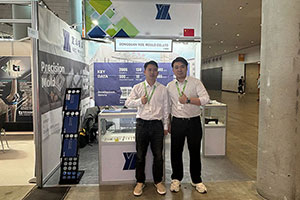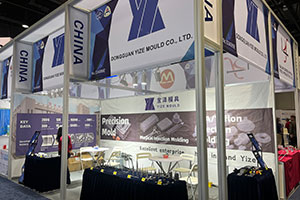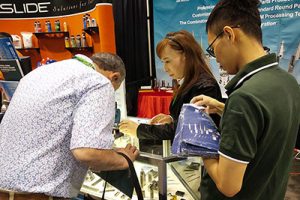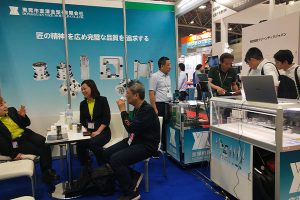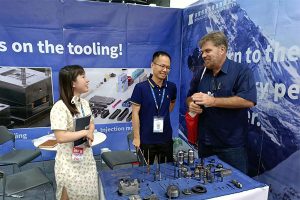How to Improve the Wear of Tungsten Carbide Conductive Blocks
In the manufacturing industry, particularly in fields such as power transmission and electronics manufacturing, tungsten carbide conductive blocks are like “star players”. They are widely used thanks to their high […]
In the manufacturing industry, particularly in fields such as power transmission and electronics manufacturing, tungsten carbide conductive blocks are like “star players”. They are widely used thanks to their high hardness, high strength, and excellent wear resistance. However, as time goes by and the operating environment changes, wear issues with tungsten carbide conductive blocks become inevitable. This not only compromises their electrical conductivity but may also pose a threat to the safe operation of equipment. Therefore, effectively improving the wear of tungsten carbide conductive blocks has become an urgent and crucial task within the industry. Below, we will explore effective methods to address this issue from the perspectives of material selection, structural design, manufacturing processes, and usage and maintenance.
Material Selection Optimization
The performance of tungsten carbide materials directly determines the wear resistance of conductive blocks. Hence, optimizing material selection is the first and foremost step in improving wear.
Notre activité : pièces en carbure, pièces de moule, moules d'injection médicale, moules d'injection de précision, moulage par injection de téflon PFA, raccords de tubes PFA. email : [email protected],whatsapp:+8613302615729.
Selecting the Appropriate Tungsten Carbide Grade
Different tungsten carbide grades have distinct compositions and properties. When choosing tungsten carbide materials, it is essential to select grades with high hardness, high strength, good wear resistance, and electrical conductivity based on the operating environment and requirements of the conductive blocks. For instance, for conductive blocks that need to withstand high pressure and high-temperature environments, grades with high hardness and high thermal stability should be chosen.
Adding Suitable Alloying Elements
Adding an appropriate amount of alloying elements, such as cobalt, nickel, and chromium, to tungsten carbide materials can enhance their hardness and wear resistance. These alloying elements can form hard phases with the carbon in tungsten carbide, increasing the material’s wear resistance and impact resistance. Additionally, the addition of alloying elements can also improve the toughness and machinability of tungsten carbide, thereby enhancing its overall performance.
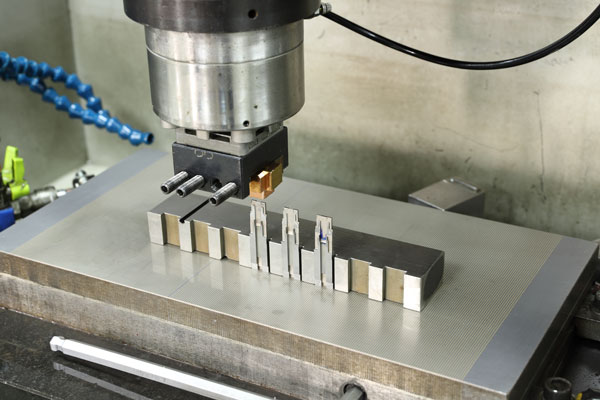
Structural Design Improvement
A reasonable structural design can effectively reduce the wear and failure of conductive blocks. Here are some methods to improve the structural design of tungsten carbide conductive blocks:
Optimizing Contact Surface Design
The contact surface of conductive blocks is the primary area prone to wear. By optimizing parameters such as the shape, size, and surface roughness of the contact surface, friction and wear can be reduced. For example, adopting an arc or inclined surface design can increase the contact area and lower the contact pressure per unit area. Reducing the surface roughness can also decrease the friction coefficient and wear amount of the contact surface.
Enhancing Structural Strength
Increasing the structural strength of conductive blocks enables them to better withstand external loads and impacts. In the design process, methods such as adding reinforcing ribs or increasing wall thickness can be employed to enhance the structural strength of conductive blocks. Meanwhile, a reasonable layout and compact structure can also reduce material waste and lighten the weight.
Improving Heat Dissipation Structure
Conductive blocks generate heat during operation, and excessively high temperatures can accelerate wear and aging. Therefore, heat dissipation issues should be fully considered in the design. Measures such as increasing heat dissipation holes or optimizing heat dissipation channels can improve the heat dissipation performance of conductive blocks. Furthermore, selecting an appropriate heat treatment process can also enhance the heat resistance and thermal fatigue resistance of tungsten carbide.
Manufacturing Process Enhancement
The manufacturing process has a significant impact on the performance and quality of tungsten carbide conductive blocks. Here are some methods to enhance the manufacturing process:
Strictly Controlling Raw Material Quality
The quality of raw materials directly affects the performance of tungsten carbide conductive blocks. Therefore, strict control over the quality and purity of raw materials is necessary during the manufacturing process. Unqualified raw materials should be promptly screened and processed to ensure that the manufactured conductive blocks possess excellent performance and quality.
Adopter des technologies de transformation avancées
Advanced processing technologies can improve the machining accuracy and surface quality of tungsten carbide conductive blocks. For example, using CNC machine tools for precision machining can guarantee the dimensional accuracy and shape accuracy of conductive blocks. Laser surface treatment technology can also improve the surface roughness and wear resistance of conductive blocks.
Strictly Managing Heat Treatment Processes
Heat treatment is a crucial step in the manufacturing process of tungsten carbide conductive blocks. By controlling parameters such as heat treatment temperature, time, and cooling method, the performance and microstructure of tungsten carbide can be improved. For instance, quenching treatment can increase the hardness and wear resistance of tungsten carbide, while tempering treatment can eliminate internal stresses and enhance toughness.
Usage and Maintenance Practices
Proper usage and maintenance can extend the service life of tungsten carbide conductive blocks and reduce wear. Here are some suggestions for usage and maintenance:
Rational Usage
When using tungsten carbide conductive blocks, it is important to adhere to operating procedures and safety regulations, avoiding improper operations such as overloading or overspeeding. Additionally, appropriate conductive block models and specifications should be selected based on the operating environment and requirements.
Regular Inspection and Replacement
Regular inspection and replacement of tungsten carbide conductive blocks are essential measures to maintain their good performance. During the inspection process, attention should be paid to observing issues such as wear, cracks, and deformation of the conductive blocks, and necessary repairs or replacements should be carried out based on the inspection results.
Maintenance and Care
During usage, it is crucial to keep tungsten carbide conductive blocks clean and dry. Avoid contact with corrosive substances to prevent moisture and dust from entering the interior of the conductive blocks. Meanwhile, regular lubrication and anti-rust treatment of the conductive blocks can improve their service life and performance.
Conclusion
Improving the wear of tungsten carbide conductive blocks requires a comprehensive approach involving material selection, structural design, manufacturing processes, and usage and maintenance. By optimizing material selection, improving structural design, enhancing manufacturing processes, and strengthening usage and maintenance practices, the wear resistance and service life of tungsten carbide conductive blocks can be significantly improved, providing strong support for the development of fields such as power transmission and electronics manufacturing.
Articles connexes
- Common Issues and Root Causes in Tungsten Carbide Pressing
- Unveiling the Secrets of Tungsten Carbide’s Composition: The Foundation of Its Performance and Applications
- High – Speed Steel vs. Tungsten Carbide
- Unveiling the Mystery of Tungsten Carbide Product Deformation and Unlocking the Path to Quality Improvement


